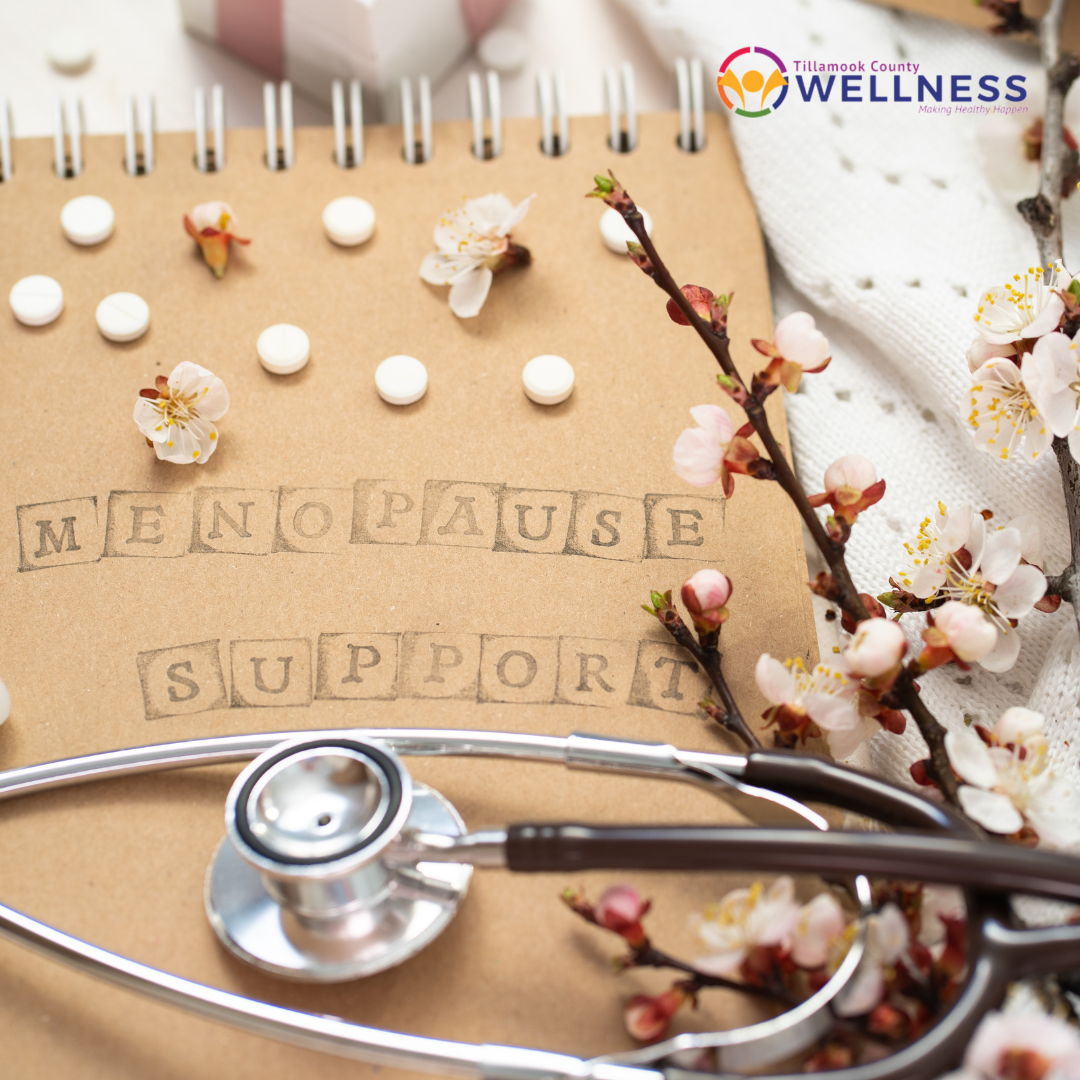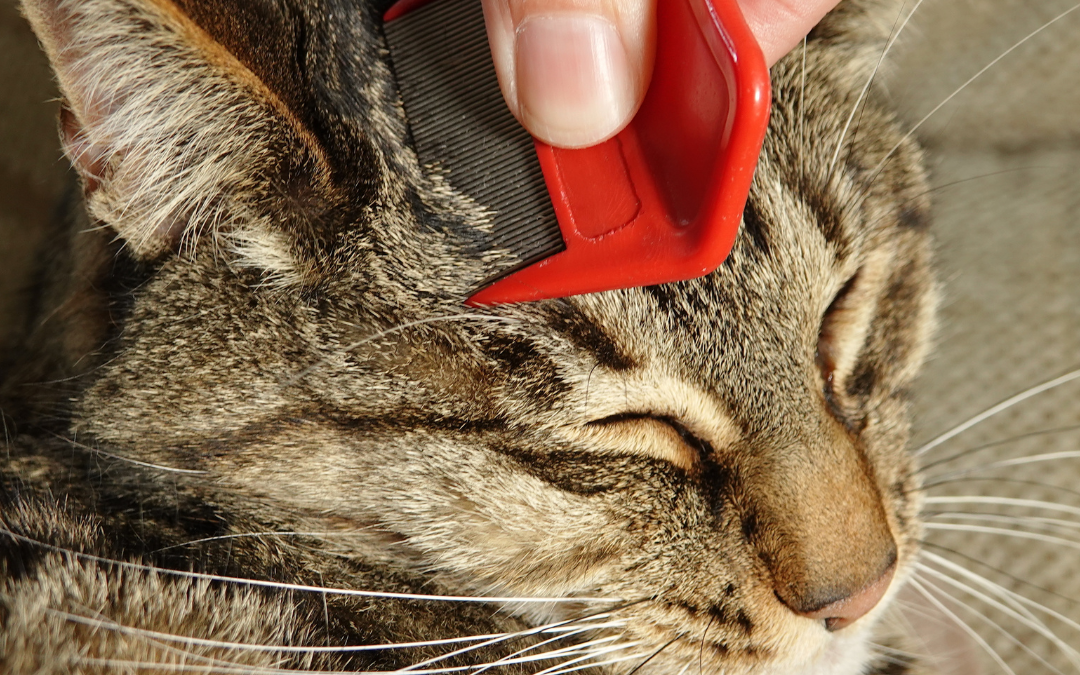
by Guest | Dec 28, 2024 | Being Well, Featured, Uncategorized
With the introduction of hormone therapy in the 1960s, women flocked to their doctors to treat their menopause symptoms. The therapy was groundbreaking and provided relief for millions of women. The treatment grew in popularity until the early 2000s. The use of hormones abruptly dropped after a women’s health study raised serious concerns over risks. With few other options available, the fallout from the study left an entire generation of healthcare providers struggling to treat women in their menopausal years. This gaping hole in women’s health is now getting addressed with more education, research, and a look back at that sentinel study that stopped it all.
What is menopause
Natural menopause occurs when a woman or person identified as female at birth has gone 12 months without any period. This defines the end of not just menstruation but also the end of fertility, as the ovaries are no longer functioning as effectively. This decreased function results in less hormone production, primarily the estrogen hormone. An estimated 1.3 million women enter menopause each year, with approximately one-third of their lives spent in menopause. The average age for natural menopause is 51 years. But symptoms may begin up to 10 years before menopause in what is known as perimenopause or the menopause transition.
Surgical menopause involves removing both ovaries with a surgery known as an oophorectomy. The removal of ovaries relates to medical issues, which can occur at any age. The missing ovaries will trigger menopause symptoms due to the lack of hormones they typically produce.
Common Menopause Symptoms
| Hot flashes are the sudden sensation of warmth in the face, neck, or chest with or without sweating |
Night sweats are hot flashes with sweating that occur at night |
| Difficulty sleeping, which may cause daytime fatigue and irritability |
Thinning of bones (osteoporosis), which may cause bones to break more easily |
| The vaginal skin may become thin or dry, causing irritation and painful sex |
Urinary issues such as recurring urinary tract infections (UTIs) and incontinence |
| Mood changes, such as depression or irritability |
Anxiety |
| Joint pain, aches, or stiffness |
Hair loss or thinning |
| Memory or concentration problems, commonly called “brain fog” |
Heart palpitations where your heart beats suddenly become more noticeable |
| Decreased interest in sex |
Tinnitus, a constant ringing in the ears |
| Weight gain |
Increased facial hair |
Types of hormone therapy
Hormone therapy is the use of prescription medications to boost hormone levels in the body. For the treatment of menopause, this therapy replaces the declining estrogen and progesterone. For menopause, this therapy comes in two types.
Systemic therapy. Estrogen and progestin, or similar compounds, are absorbed into the blood and travel throughout the body to treat symptoms. This method is very effective at treating hot flashes. Systemic therapy comes in the form of:
- Oral pills
- Patches placed on the skin
- Gels or sprays placed on the skin
- Ring inserted into the vagina
Low-dose therapy. Also known as vaginal estrogen therapy, this medicine treats just the vaginal area in the form of topical or vaginal creams. Low doses rebuild and moisturize vaginal tissue. Because of the small doses of this therapy, there are fewer risks as only a minimal amount enters the bloodstream.
Concerns about hormones for the treatment of menopause
In 1991, the Women’s Health Initiative (WHI) began a long-term study on women’s health. The study focused on cardiovascular disease, cancer, and osteoporosis-related fractures. In 1998, the study looked at hormone therapy use with both estrogen and the combination of estrogen and progestin. By 2004, researchers had stopped both studies early after finding increased risks of heart disease, stroke, pulmonary embolism, and breast cancer. The halting of the studies made headlines, leading many women to stop using hormones. Women aged 52-65 had the greatest decline as use dropped 88% in this group.
The impact of the WHI study was profound. Few other treatments were well studied. An entire generation of healthcare providers were left lacking information on treating menopause, and women felt this. A survey in 2021 found that 73% of women ages 40-65 were not getting care for their menopause symptoms. An additional 65% said they would not consider hormone therapy.
The benefits of treating symptoms
About 70-80% of women have menopause symptoms negatively affecting their quality of life. Hot flashes are the most reported symptom and can last more than a decade. However, up to 40% of individuals will continue to have symptoms into their 60s, and up to 15% will have hot flashes into their 70s. Hot flashes affect not only physical comfort but also sleep and mood.
The tide is changing with menopause treatments. Since the WHI study, research has shown hormone therapy is safer in younger women. Starting MHT within 10 years of the onset of menopause or before age 60 poses less risk. Hormone therapy is the most effective method of treating vasomotor symptoms like hot flashes. About 80% of women get relief from symptoms within two weeks of starting hormone therapy. There are still risks, and each individual should discuss their personal risk with their healthcare provider. Risks associated with hormone therapy:
- Stroke
- Uterine cancer
- Blood blots
- Breast cancer
For many, the benefits of hormone therapy outweigh the risks.
- Reduced menopause symptoms
- Relief of vaginal discomfort and dryness
- Improved bone health
- Ease symptoms of overactive bladder
- Lower risk of cardiovascular disease
- Reduced risk of developing type 2 diabetes
But hormones aren’t the only treatments. More research backed non-hormonal options are available to treat a variety of symptoms.
When to see a healthcare provider
Menopause treatment is in the spotlight with organizations nationwide. Locally, Oregon Health and Sciences University (OHSU) began offering training on menopause care. The classes are offered statewide to primary care providers and community health partners. With this program, OHSU focuses on reaching healthcare providers located in rural areas, including Tillamook County.
The impact of menopause symptoms cannot be understated. They are disruptive for many women daily, affecting how they feel, work, and relate to others. Perimenopause and menopause symptoms last for a decade or more, yet 1 in 8 adults still avoid talking about menopause. If you have perimenopause or menopause symptoms, talk with your healthcare provider. You can discuss:
- Whether you have reached menopause
- The symptoms you have and how much they affect you
- Your health risks based on your age and general health
- Whether hormone therapy is a good option for you
- Alternative treatment options to hormone therapy
If you need assistance in finding a provider to treat your menopause symptoms, check The Menopause Society’s website for a link to menopause specialists. If you are in the Columbia Pacific CCO, look at their Find a Provider page.
Written by: Leanna Coy, FNP-BC, Freelance Health Writer
References:
Menopause definitions. (2024). The Menopause Society. Retrieved December 2, 2024. https://menopause.org/patient-education/menopause-glossary
Menopause. (2024). Society for Women’s Health Research. Retrieved December 2, 2024. https://swhr.org/health_focus_area/menopause/
Walsh, J. (January 10, 2024). How gaps in research lead to gaps in care for aging women. Harvard Medical School News & Research. https://hms.harvard.edu/news/how-gaps-scientific-data-lead-gaps-care-aging-women#:~:text=Ambrosio%3A%20Menopause%20is%20inextricably%20intertwined,third%20of%20their%20lives%20postmenopausal.
Signs and symptoms of menopause. (March 14, 2023). NHS. https://www.nhsinform.scot/healthy-living/womens-health/later-years-around-50-years-and-over/menopause-and-post-menopause-health/signs-and-symptoms-of-menopause/
Hormone Therapy. (2024). The Menopause Society. Retrieved December 2, 2024. https://menopause.org/patient-education/menopause-topics/hormone-therapy#:~:text=What%20Is%20Hormone%20Therapy?,night%20sweats%2C%20and%20sleep%20disturbances.
Kohn, G.E., Rodriguez, K.M., Pastuszak, A.W. The history of estrogen therapy. Sex Med Rev. May 27, 2019. PMID: 31147294
About WHI. (2021). The Women’s Health Initiative. Retrieved December 2, 2024. https://www.whi.org/about-whi
Iyer, T.K., Manson, J.E. Recent trends in menopausal hormone therapy use in the U.S. JAMA Network. September 27, 2024. PMID: 39331374
Elflein, J. Treatment of menopause symptoms among older U.S. women as of 2021. Statista. August 5, 2021. https://www.statista.com/statistics/1255552/treatment-of-menopause-symptoms-among-older-us-women/
The Menopause Society. September 4, 2024. Hormone therapy usage rates still low despite proven benefits. https://menopause.org/press-releases/hormone-therapy-usage-rates-still-low-despite-proven-benefits#:~:text=It’s%20estimated%20that%2070%25%20to,continue%20to%20have%20hot%20flashes.
Yang, J. (November 20, 2023). Share of U.S. adults who avoid talking about menstruation or menopause as of 2022. Statista. https://www.statista.com/statistics/1424427/menstruation-and-menopause-taboo-us/
Solving the mysteries of menopause, one conversation at a time. (October 24, 2024). Oregon Health News Blog. https://covidblog.oregon.gov/solving-the-mysteries-of-menopause-one-conversation-at-a-time/?utm_medium=email&utm_source=govdelivery

by Renee Aufdermauer | Dec 5, 2024 | Featured, Uncategorized
Our pets bring joy, companionship, and a sense of well-being to our lives, playing a key role in our overall wellness. Whether it’s a wagging tail greeting us at the door or the soothing purr of a cat, pets help reduce stress and enhance our happiness. However, when fleas invade their space—and ours—it can quickly become a source of stress and frustration. Fleas not only irritate our pets, causing itching and discomfort, but they can also become a nuisance for the entire household. Taking proactive steps to manage fleas helps ensure that the wellness our pets provide is not overshadowed by the challenges these tiny pests bring.
While fleas can be a challenge, there are effective, budget-friendly, and non-toxic ways to tackle the problem. Fleas not only discomfort pets but can also impact human health and the home environment. Thankfully, with consistent effort and the right approach, you can control fleas without resorting to expensive or harmful treatments, keeping your pets and your home a haven of wellness.
Understanding Fleas and Their Lifecycle
Fleas are small but tenacious insects that thrive in warm, humid environments. They go through a complex life cycle with several stages, including eggs, larvae, pupae, and adults. Each stage can resist typical insecticides, which is why it’s important to address fleas at all stages of their life cycle to fully eliminate them. According to the CDC’s guidelines on flea control, a comprehensive four-step process is the most effective way to manage a flea infestation.
The Process to Manage Fleas in Your Home
Sanitation:
Thorough cleaning is the first and most important step in controlling fleas. Fleas and their eggs can hide in pet bedding, rugs, carpets, and even along the edges of walls. To break the flea life cycle, wash all bedding, rugs, and pet bedding in hot water, then vacuum thoroughly, including floors, carpets, and areas along walls. Sweep hard floors and vacuum often to pick up any stray fleas or eggs. This helps to reduce the flea population in your home without relying on toxic chemicals.
Pet Treatment:
It’s essential that every pet in the household is treated. Start by bathing your pets with soap and water to gently kill adult fleas. After the bath, use a flea comb to remove any remaining fleas, paying close attention to the face, neck, and area in front of the tail. Be sure to consult with your veterinarian to choose the best non-toxic flea treatment for your pets. There are many natural flea treatments available that don’t contain harsh chemicals, and your vet can guide you on the safest options.
Home Treatment:
Home treatment should begin at the same time as pet treatment to ensure that the flea life cycle is disrupted. While commercial pest control applicators can provide professional help, there are also natural home treatments available, like diatomaceous earth (food grade), which can be sprinkled around areas where fleas tend to hide.
Follow-Up:
Fleas are tough and resistant to insecticides at various stages of their life cycle. To fully eliminate fleas, you’ll need to follow up with additional treatments. The CDC recommends that you apply two or more follow-up treatments within 5-10 days after the initial treatment. Continue regular vacuuming and cleaning during this period to pick up any remaining eggs and juvenile fleas that might have been missed in earlier treatments.
Fleas are a common challenge for pet owners, but with the right approach, you can manage them without relying on expensive or toxic products. By following the CDC’s four-step process and integrating natural flea control methods, you can protect both your pets and your family from these pesky insects. Regular cleaning, pet treatments, home interventions, and follow-up care are essential to breaking the flea life cycle and keeping your home flea-free.
For more information visit: https://www.cdc.gov/fleas/section-name/index.html
For more local health and wellness information, visit www.tillamookcountywellness.org or follow Tillamook County Wellness on Facebook and Instagram.

by Michelle | Nov 1, 2024 | Being Well, Featured, Move Well, Why I'm In
Why I’m “in” with Wellness
Michelle Jenck, Well-Being Director, Adventist Health Tillamook and Tillamook County Wellness Coordinator
Wishing for Wellness
I was recently asked how I came to be involved in wellness work. I’d like to say I was a lifelong fitness enthusiast but that isn’t true. As a child, I wanted to be physically fit and athletic but, alas, it was not in the cards for me. Severe asthma left me breathing into a brown paper bag on the sidelines and a debilitating eye condition called amblyopia, (my left eye is nearly blind), meant that, with no depth perception, I was to forever be, the “last one picked for the team.”
During middle school, I was too young to work, old enough to be home by myself but idle enough to have begun getting in trouble (serious, trouble). My saving grace was wandering into a YMCA to kill time after school. I started going to the weight room and pushing weights around. I had no idea what I was doing but kind people showed me what to do and what muscles I was working. It felt so good to feel a sense of control moving my body. I could push heavy things on purpose and muscles would form in places that were once squishy bits. It was like magic.
The best part was how weight training made me feel emotionally. I felt happier and gained a sense of control (something I have learned we need for good mental health, called a “locus of control.”) My self-esteem improved. I could set goals for myself and work to reach them, building successes I never believed possible for myself. I pursued weight training all through high school and was one of a few girls that joined the school’s newly formed competitive power lifting team.
My senior year in high school, I decided maybe I could push my body in other ways and began my first attempts at running. Initially, I “ran” 1-2 blocks and then sat on a curb breathing into a paper bag until my asthma attack subsided enough to slowly walk home. Tenacious and undaunted, I kept after my goal, gradually working my way up to running 2-3 miles at a time, and ultimately up to 6 miles over as many years. Running, even at a slow pace, helped me burn off stress and was a convenient way to get in a quick bout of exercise when I didn’t have time to hit the gym.
Working in Wellness
Through high school, college and into my young adult life, exercise was a staple. I tell people it should be like brushing your teeth; something you do every day without even thinking about it, because it is so ingrained in your routine.
As a stay-at-home mom, I was taking classes at the Tillamook YMCA, grateful to spend time among adults. One day, I made the fateful decision to ask Jeannie Christensen if there was ever going to be a step aerobics class offered at the Y. Like so many things in a small town, the answer was, “why don’t you start one?” Thus began a nearly 30-year career of teaching many different exercise disciplines.
I loved (and still love) teaching fitness classes. It is a way to give back, helping others experience their best life. Over all these years I have seen fitness change people from the inside out. That “locus of control,” it turns out, is an important component of life success and resilience. When we become aware of and gain control over moving our bodies, using our minds, it is very empowering.
The A-Ha Moment
By this time, our oldest son had been diagnosed with autism and our lives were changing dramatically. As we worked with our son to help him develop the ability to regulate his emotions and manage the sensory stimuli causing so much turmoil in his mind and body, I discovered magic could be found in movement. The most effective exercises involved movements that strengthened the parts of his brain involved in balance, spatial awareness and motor planning. How interesting, I thought. The same could be said for teaching a step class.
Teaching adults how to move, while helping our son re-wire his brain with movement, turned out to generate an “a-ha” moment of monumental proportions. As I began to understand how the brain is formed and how it changes with regular physical activity, I began to consider the larger implications of what I was learning. What could this mean for other children? For anyone who wanted to be more physically coordinated, better regulated, smarter and more successful?
Armed with this discovery, I decided to go back to school to pursue a Master of Education in Health & Kinesiology. Graduating in 2012, I used my degree to expand exercise programming at the YMCA, adding Tai Chi: Moving for Better Balance, which over 300 older adults took in 2014. The following year, I was tapped to help lead a community effort to focus on reducing chronic disease in Tillamook County, which led to the formation of Tillamook County Wellness.
My Hopes for Wellness
I am very grateful for my experiences and the opportunity to influence health at both the individual and population level. As I enter my ninth year as coordinator for Tillamook County Wellness, I am looking ahead; or better yet, I am looking further “upstream.” So much of what contributes to wellness can be found between our ears. The mind. The brain. The connection between the brain and the body. This is where wellness starts. And it starts early in life – in the womb, in fact. Nearly 90% of a child’s brain is developed by the age of three and much of that development depends on movement.
My hopes for wellness are that we will begin to prioritize proper movement, nutrition and secure relationships during this critical window of childhood development. Do I have ideas for this? You bet I do and I can’t wait to keep working on wellness!

by Guest | Apr 24, 2024 | Being Well, Featured, Uncategorized, Why I'm In
“WHY I’M IN …” An interview with Emery Edwards, AmeriCorps, VISTA
What drew you/your organization to partner with Tillamook County Wellness?
I’ll be honest, I started working with TCW because it was something required of my position as an AmeriCorps VISTA volunteer. I came to Tillamook, though, because I was in search of something more fulfilling, authentic, and close to nature than what I had built in Seattle. Since the first day I learned about TCW I was inspired by the community-driven initiatives to make Tillamook a better place to work, live, and be. I will continue my work with TCW because I am inspired by the passion exhibited by its members towards the never-ending work of improving this county. I have found that TCW embodies what I was searching for when I moved to Tillamook- it is authentic, innovative, fulfilling, and emphasizes genuine relationships and community action.
What, if any, changes have you seen come about as a result of this work?
I can see how TCW brings organizations and people together for initiatives to improve the county. Being behind the scenes and involved in several committees I have the unique opportunity to see so much of what TCW is doing! The collaborative nature of the committees creates buy-in throughout organizations in the county and provides a platform for the exchange of ideas all towards the betterment of our community. I specifically see how a lot of what TCW does is directly informed by data collected about the greatest needs of the county, specifically for vulnerable populations. I see access to care and access to physical activity being increased for all of Tillamook County, but particularly emphasized for historically underserved populations. This is critical work that is not being done everywhere and I’m so happy that TCW is taking that initiative.
What have you learned from being involved in this work?
Gosh, I have learned so much about what it means to bring about community action. This community has so many wonderful members who are passionate about improving the livelihoods of all county residents which has restored some of my faith in humanity. I learn so much from my work with TCW almost every day, but I think the biggest thing I’ve learned is that community action like TCW is even possible!
What are your hopes for this work as it relates to you/your organization?
I hope that this work can continue to grow and expand to include more representatives of the community. I really hope to see more community members, retirees, and other people looking to use their time, energy, and skills to better their community through TCW. I hope that this will cultivate a sense of ownership for Tillamook County residents. In my experience, if you yourself work on something you feel a sense of ownership over it. And that’s really important for this program’s sustainability. The more people come together wanting to improve their community through TCW the more positive impact we’ll be able to make
What are your hopes for this work as it relates to changing community health in Tillamook County.
Moving to Tillamook County has changed my life, and I know it can change so many others. I really hope that this work will improve access to a happy and healthy life for all. It’s really hard to not have any healthy habits, nutritional knowledge, or a healthy relationship with your body. I believe that TCW is providing access to healthy choices we can make for ourselves. This is essential work to improving community health because when you feel like you’re on your own with your health, it’s really isolating and it can feel like you have to reinvent the wheel. TCW is changing Tillamook County for the better, and my biggest hope is that we continue to receive support from the community we serve.
Is there anything else you’d like to share?
I would just like to add that moving to Tillamook County has changed my life for the better! I’ve been able to build a wonderful community of authentic, caring, amazing people who truly care about this community. Tillamook County has its flaws but it is such a special place to me and I am so grateful to have had the opportunity to serve here. I am so looking forward to seeing what amazing things we can accomplish with community action! And, a special thank-you to Michelle Jenck, the Tillamook County Wellness Coordinator. Without her, so much of this work would not be possible!

by Guest | Dec 7, 2023 | Being Well, Featured, Why I'm In
Why are you “IN”?
The Tillamook County Wellness “Why I’m In” interview series highlights our community partners and what has inspired and motivated them to work toward the common goal of improving community health.
“WHY I’M IN …” An interview with Janeane Krongos, Prevention Specialist, Tillamook Family Counseling Center (TFCC). Janeane is the co-chair of the health and promotion committee.
What drew you/your organization to partner with Tillamook County Wellness?
Janeane: Being part of the Tillamook County Wellness (TCW) Health Promotion committee was a natural choice for me, because TCW and I have a shared goal of improving community health through increasing protective factors. Protective factors are characteristics or attributes that can help to lower the risk of negative health outcomes such as diabetes, substance misuse, underage substance use prevention, problem gambling, and suicide prevention. Examples of protective factors include access to basic needs (food and housing), social connections, connection to the community, access to resources, access to healthcare, coping skills, and problem-solving skills.
What, if any, changes have you seen come about as a result of this work?
Janeane: One change that I have seen since I have been part of this group is an increased focus on prevention topics (substance misuse, problem gambling prevention, and suicide prevention) and mental health in TCW content on the website and social media. I think this is a beneficial change and I hope to see more content on these topics.
What have you learned from being involved in this work?
Janeane: I am relatively new to the Tillamook County, I moved to the community in March 2020. Being part of the committee has allowed me to learn about Tillamook County directly from committee members who know the area well. In the monthly meetings I had opportunities to meet with people who are active in the community. Additionally, I have learned about local places that I can go to exercise (local parks, hiking trails, beaches, & facilities), local organizations, community resources, and community events.
What are your hopes for this work as it relates to you/your organization?
Janeane: The organization that I work for (Tillamook Family Counseling Center) has played an active role in TCW since its inception. I hope that they will continue to play an active part in TCW. As for myself, I hope that I will continue to play an active role in TCW. I am the current co-chair of the Health Promotion committee. I enjoy having this role. I respect the members of the group, enjoy the meetings, and enjoy having opportunities to share prevention messaging and share helpful resources in TCW content. Since I have been part of this committee, I have had opportunities to write blogs on a variety of topics including problem gambling prevention, safe medication practices, suicide prevention, and mental health.
What are your hopes for this work as it relates to changing community health in Tillamook County.
Janeane: One hope that I have for the future, is for more community members to get involved in TCW. Currently TCW has around 80 partners who volunteer their time and skills and around 50 community partner organizations who allow staff to attend the meetings. A person can get in TCW in whatever way that works best for them. Examples of ways a person can get involved include: joining a TCW committee(Health Promotion, Access to Care, Access to Physical Activity, and Workplace Wellness), participating in TCW campaigns(This Way to Well-Being), attending TCW programs(walking groups, workshops, or events), sharing your ideas by filling out surveys, following TCW on social media, engaging with TCW social media post (like, share, and comment), subscribing to the TCW newsletter, or making a donation to TCW on the website.
What are your hopes for this work as it relates to changing community health in Tillamook County?
I hope that TCW continues to have strong partner support and continues to generate relevant and trusted health inspiration content.
Other wellness questions? Email us at info@tillamookcountywellness.org. For more local health and wellness information, visit www.tillamookcountywellness.org or follow Tillamook County Wellness on Facebook and Instagram.





